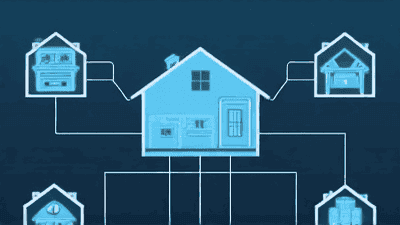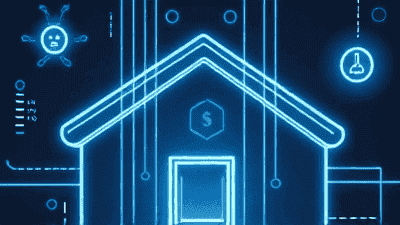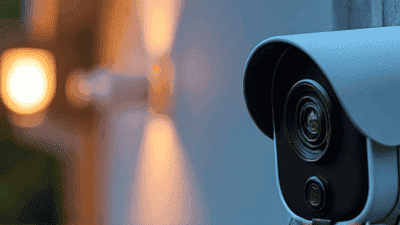
In recent years, smart home technology has become increasingly popular, and one of the most sought-after features of a smart home is a robust security system. As more homeowners prioritize safety and convenience, smart home security systems have evolved to offer advanced features that provide peace of mind and enhanced protection.
A smart home security system is a network of interconnected devices that work together to protect your home from intruders, fire, and other potential threats. Unlike traditional security systems, smart home security systems are integrated with internet-connected devices, allowing homeowners to monitor and control their security systems remotely via smartphones, tablets, or computers. These systems often include a combination of cameras, sensors, alarms, and smart locks, all managed through a central hub or app.
The key difference between traditional and smart security systems is the level of automation, remote access, and integration with other smart home devices. Smart home security systems not only alert you to potential threats but also provide real-time notifications, video footage, and the ability to take immediate action, even when you’re away from home.

Smart home security systems are made up of several components that work together to provide comprehensive protection. Here are the most common components you’ll find in a typical system:
Smart cameras are one of the most visible and essential components of a smart home security system. They come in various types, including:
Smart cameras often feature motion detection, night vision, and two-way audio, enabling you to monitor your home in real-time and receive alerts when activity is detected.
Sensors are the backbone of any security system. They detect changes in the environment and trigger alerts or actions. Common types of sensors include:
Alarms are designed to deter intruders and alert homeowners to potential threats. Smart alarms can be customized to trigger specific actions, such as sounding a siren, sending notifications to your phone, or activating other security devices.
Smart locks allow you to control and monitor access to your home remotely. You can lock or unlock doors from your smartphone, grant temporary access to guests, and receive notifications when someone enters or exits your home.
The central hub is the brain of the smart home security system. It connects all the components and allows you to control them from a single app. Some hubs also include voice control capabilities, enabling you to manage your security system using voice assistants like Amazon Alexa or Google Assistant.
The mobile app is the interface through which you interact with your smart home security system. It allows you to monitor your home, receive alerts, control devices, and customize settings from anywhere.
Investing in a smart home security system offers numerous benefits that go beyond traditional security measures. Here are some of the key advantages:
One of the most significant benefits of a smart home security system is the ability to monitor your home from anywhere. Whether you’re at work, on vacation, or simply away from home, you can check in on your property using your smartphone or tablet.
Smart security systems send instant notifications to your phone when they detect unusual activity, such as a door opening, motion detected, or a security breach. This allows you to take immediate action, such as contacting authorities or remotely activating alarms.
Smart home security systems can integrate with other smart home devices, such as lights, thermostats, and voice assistants. For example, you can program your lights to turn on when motion is detected or use voice commands to arm or disarm your security system.
Visible security cameras, smart doorbells, and alarms act as a deterrent to potential intruders. Knowing that your home is equipped with advanced security measures can discourage criminals from targeting your property.
Smart home security systems offer a high level of customization. You can tailor the system to meet your specific needs, such as setting up specific zones for monitoring, creating schedules for arming and disarming the system, and choosing which devices to include.
Some smart security systems integrate with smart thermostats and lighting systems, helping you save energy by adjusting settings based on your presence or absence from home.
Many insurance companies offer discounts on homeowner’s insurance for homes equipped with smart security systems. This can help offset the cost of the system over time.

There are several types of smart home security systems to choose from, each with its own features and benefits. Here are the most common types:
Do-it-yourself (DIY) systems are designed for homeowners who prefer to install and manage their security systems on their own. These systems are typically easy to set up, affordable, and customizable. Popular DIY brands include Ring, SimpliSafe, and Arlo.
Professionally installed systems are set up by security experts who ensure that all components are properly installed and integrated. These systems often come with ongoing monitoring services and are ideal for homeowners who want a hassle-free experience. Examples include ADT and Vivint.
Wireless systems use Wi-Fi or cellular connections to transmit data between devices and the central hub. They are easy to install and can be placed anywhere in your home without the need for extensive wiring.
Wired systems require physical connections between devices and the central hub. While they are more reliable and secure than wireless systems, they can be more challenging to install, especially in older homes.
Hybrid systems combine wired and wireless components, offering the reliability of wired systems with the flexibility of wireless devices. These systems are ideal for homeowners who want the best of both worlds.
When selecting a smart home security system, it’s essential to consider your specific needs and preferences. Here are some factors to keep in mind:
Smart home security systems vary widely in cost. DIY systems are generally more affordable, while professionally installed systems can be more expensive. Consider both the upfront cost and any ongoing fees, such as monitoring or subscription services.
The size and layout of your home will influence the type of system you need. Larger homes may require more cameras and sensors, while smaller homes or apartments can often get by with a simpler setup.
Decide whether you want self-monitoring or professional monitoring. Self-monitoring systems send alerts to your phone, while professional monitoring services contact authorities on your behalf in case of an emergency.
If you already own smart home devices, such as lights, thermostats, or voice assistants, look for a security system that integrates seamlessly with them.
If you’re not tech-savvy, a professionally installed system may be the better option. However, if you’re comfortable with DIY projects, a self-installed system can save you money.
Choose a system that can grow with your needs. Look for systems that allow you to add more devices or features in the future.
Consider the level of customer support provided by the manufacturer or service provider. Reliable customer support can make a big difference if you encounter any issues with your system.

Smart home security systems offer a modern, effective way to protect your home and loved ones. With features like remote monitoring, real-time alerts, and integration with other smart devices, these systems provide unparalleled convenience and peace of mind. By understanding the components, benefits, and types of smart home security systems, you can make an informed decision and choose the right system for your home.
Whether you’re looking for a DIY system or a professionally installed solution, investing in a smart home security system is a step toward creating a safer, more secure living environment. As technology continues to advance, smart home security systems will only become more sophisticated, offering even greater protection and convenience for homeowners.